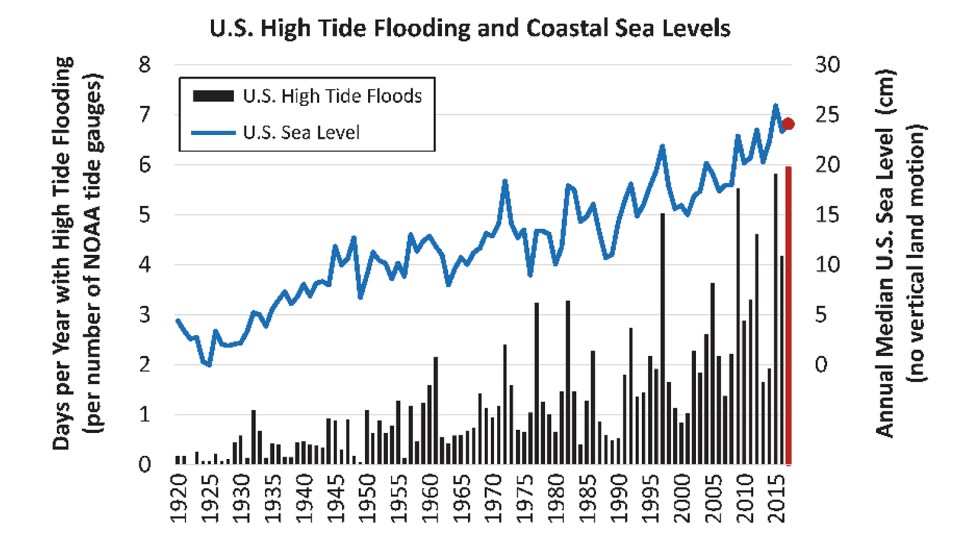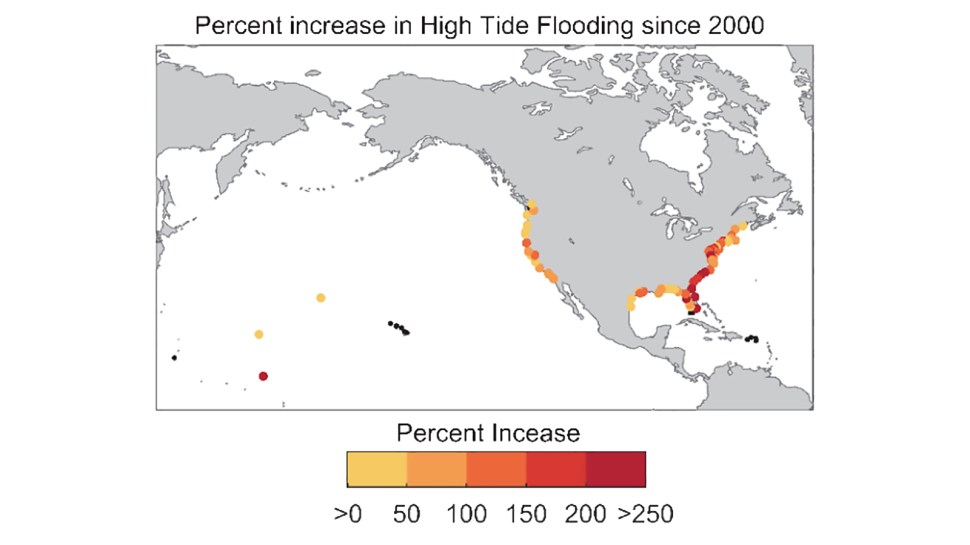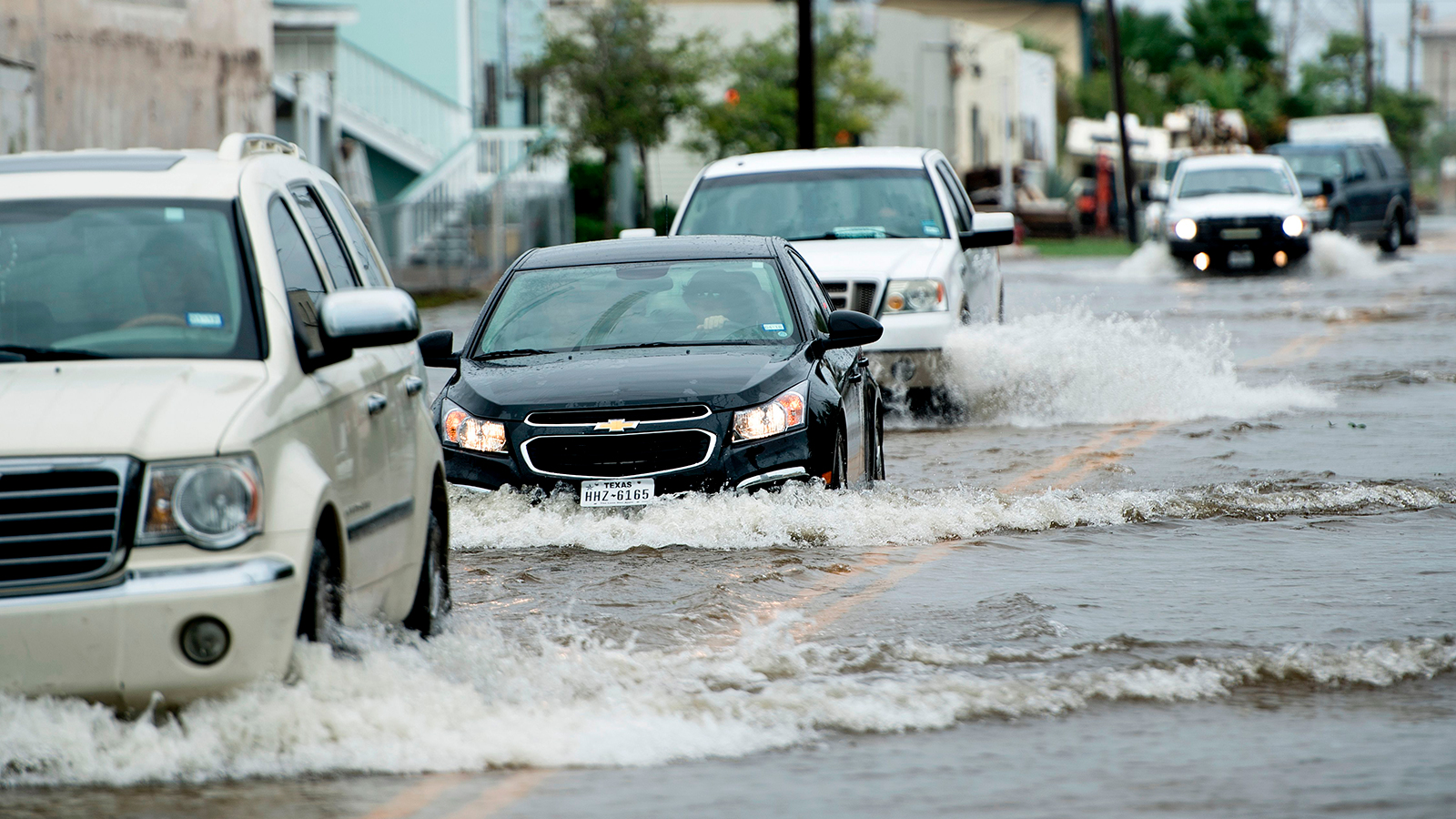Thanks to global warming-induced sea-level rise, coastal waters are increasingly spilling into communities. In a report released Wednesday, the National Oceanic and Atmospheric Administration quantified the extent of that inundation with some sobering statistics.
The bottom line: As a whole, the U.S. is experiencing more coastal flooding than ever.

NOAA
NOAA scientists analyzed data regarding high-tide flooding —defined as flooding that causes public inconveniences, like road closures — from nearly 100 coastal water-level gauges across the country in the past meteorological year (May 2017 through April 2018). Since 2000, the report says, parts of the U.S., primarily along the eastern seaboard, have experienced more than a 250-percent increase in yearly flooding.
“Due to sea level rise, the national average trend in high-tide flood frequency is now more than 50 percent higher than it was 20 years ago, and 100 percent higher than it was 30 years ago,” oceanographer and report author William Sweet said in a conference call with reporters.
And in the coming meteorological year, he said, “Records are expected to continue to be broken.”

NOAA
Here are the takeaways from Sweet and his colleagues’ findings:
- 2017 was a record-breaking year for flooding. More than 25 percent of coastline areas monitored either met or surpassed their record number of flood days.
- National records were broken, too. Across the country, there were an average of six flood days at each gauge that NOAA monitored — that’s more than any previous year.
- The northeast Atlantic and western Gulf of Mexico Coast regions were hit the hardest — Boston, Atlantic City, and Galveston, Texas, all broke flooding records and experienced some of the most flood days nationally.
- Extreme weather played a role. Storms like Hurricane Irma and nor’easters that struck New England helped contribute to the upticks in water levels.
- Notably, the official report does not implicate climate change — those words are not mentioned.
- What’s on tap for 2018? You guessed it! More floods. The report predicts that in the 2018 meteorological year, there will be 60 percent more high-tide floods than at the start of the century — and possible mild El Niño conditions over the next year will likely play a role in that.



